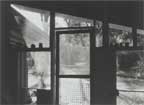Dust Bowl Survivors Battle a Fiercer Drought
 BOISE CITY, Okla. — While tornadoes and floods have ravaged the South and the Midwest, the remote western edge of the Oklahoma Panhandle is quietly enduring a weather calamity of its own: its longest drought on record, even worse than the Dust Bowl, when incessant winds scooped up the soil into billowing black clouds and rolled it through this town like bowling balls.With a drought continuing to punish much of the Great Plains, this one stands out. Boise (rhymes with voice) City has gone 222 consecutive days through Tuesday with less than a quarter-inch of rainfall in any single day, said Gary McManus, a state climatologist. That is the longest such dry spell here since note-keeping began in 1908.
BOISE CITY, Okla. — While tornadoes and floods have ravaged the South and the Midwest, the remote western edge of the Oklahoma Panhandle is quietly enduring a weather calamity of its own: its longest drought on record, even worse than the Dust Bowl, when incessant winds scooped up the soil into billowing black clouds and rolled it through this town like bowling balls.With a drought continuing to punish much of the Great Plains, this one stands out. Boise (rhymes with voice) City has gone 222 consecutive days through Tuesday with less than a quarter-inch of rainfall in any single day, said Gary McManus, a state climatologist. That is the longest such dry spell here since note-keeping began in 1908. The Dust Bowl of the 1930s, caused in part by the careless gouging of the earth in an effort to farm it, created an epic environmental disaster. Experts say it is unlikely to be repeated because farming has changed so much. Boise City recovered from the Dust Bowl and has periodically enjoyed bountiful years since.
But this drought is a reminder of just how parched and unyielding life can be along this wind-raked frontier, fittingly called No Man’s Land, and it is not clear how many more ups and downs Boise City can take.
“The community is drying up,” Mark Axtell, the area’s only funeral director, said on a walk through the cemetery, where brown tufts of buffalo grass crunched underfoot.
In the last decade, Boise City lost almost 16 percent of its population, according to the 2010 census. Just 1,312 people live here now — far fewer than the 3,000 who bought the first lots in 1908, only to discover that they had been hoodwinked. The land was inhospitable, and promises of railroads, water and trees (Boise is from the French “le bois,” meaning trees) were a fraud.
Boise City became the county seat for Cimarron County. But now, the county, too, has sagged. In the last decade it lost 21 percent of its population. Its 2,475 residents are spread so thin over such a wide expanse that an average of only 1.3 people occupy each square mile.
The young have little reason to stay. The old are dying or moving away to be closer to their children or to medical facilities, since Boise City’s only nursing home has closed.
“Last year, we did half as many funerals as the year I took over,” said Mr. Axtell, 48, who bought the business 25 years ago. “Last year was my fourth consecutive low year.”
The plunge in funerals prompted him to buy a cafe last year to supplement his income. Called the Rockin’ A, its 12 tables have become the town’s social hub.
But the main street outside is deserted, and many storefronts are shuttered. Most people shop at the Wal-Mart 60 miles away.
Residents blame a lack of jobs — not the drought — for the town’s decline. Dry spells come and go, they say, and coping with them is baked into their psyches. Many who live here are descended from those souls who endured the Dust Bowl and have reaped harvests aplenty since; they are bound to the land and not easily discouraged.
“Your die-hards will stay here,” Rebecca Smoot, 58, whose family homesteaded here in the early 1900s, said during breakfast at the Rockin’ A. She lives in Boise City but works as a corrections officer just over the border in Texas. “They stayed here during the Dirty Thirties when everyone else was moving. That’s the way a lot of the people ended up with a lot of the land.”
Those who stayed then are deemed successful now, though many were too poor at the time to leave with the “Okies.”
Huston Hanes, 87, who lived through the Dust Bowl on a farm in eastern Cimarron County, said he would never forget the wind blowing fine dust particles throughout his house and how quickly the wet cloths he held over his face to protect his lungs would turn black. But he said he was glad his family stayed.
“We have hard times, but any place you go, you’re going to have some adversity,” he said with a shrug. “We don’t have that many tornadoes.”
The drought plays a major role in the town’s self-image and its economy. It has already doomed this year’s crops and is forcing ranchers to sell some of their cattle; without water and grass, cows need more nutrient-rich feed, which is expensive.
On the Sharp Ranch, 15 miles outside town, the cattle were grazing on dirt.
“The protein value is getting down low,” Dan Sharp, 65, said as Dr. Rusty Murdock, the county’s only veterinarian, tested his 22 bulls for their potency. Three were deemed subpar, possibly because of the drought, and Mr. Sharp said he would sell them for slaughter.
“If they can’t reproduce, they aren’t worth keeping,” he said. Over the last 15 years, his herd on his 15,000 acres (roughly the size of Manhattan) has dropped to 450 from 580.
Mr. Sharp’s wife, Carol, 63, said the drought had “made everything a lot harder.”
“You live more day-to-day because you don’t know what tomorrow is going to bring,” she said as wind whipped dust across the range and her daughter donned ski goggles.
But the Sharps are committed to ranching. “The land is like a member of the family,” Ms. Sharp said. “You don’t disown it if things aren’t going right.”
When a community is as dependent on agriculture as this one, the effects of a bad season ripple through the economy. Mr. Axtell, the funeral director, said that with the drop in funerals, all but one flower shop had closed.
Judy Harkins, 63, a beautician, said her customers were scrimping more.
“My little ladies on Social Security, they’ll think of some excuse to come in every other week instead of every week,” Ms. Harkins said.
Many in town dread the day when a construction crew completes a highway bypass around the town. They expect that long-haul truckers, who often stop in town for gas and food, will no longer bother.
John Freeman, a county commissioner, estimated that 3,000 trucks a day passed through now and provided half the county’s sales tax revenues. He hopes the county can make up for that loss, several times over, by harnessing the inexhaustible supply of wind. But the permitting process for wind farms takes years, and transmission power lines are not yet built.
Like many other small towns that survived the Dust Bowl, Boise City now seems on the verge of extinction.
“There’s no economic growth whatsoever,” Mr. Freeman lamented. “It’s going to have to be wind energy or we’ll die.”






























0 Comments:
Post a Comment
<< Home